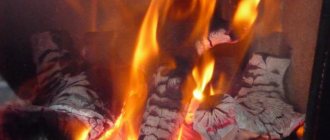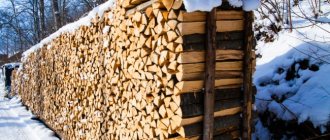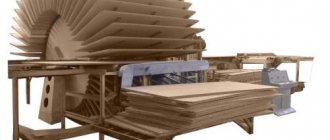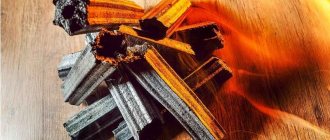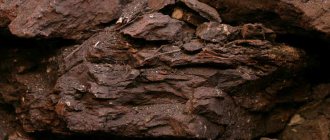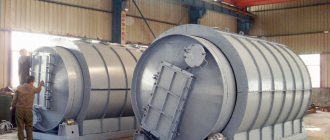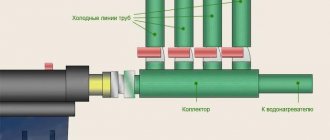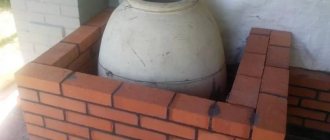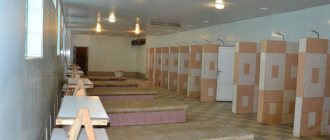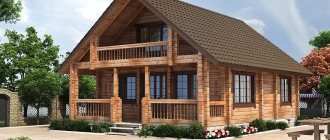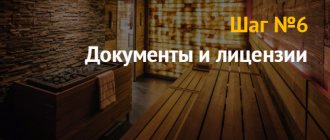Charcoal is a product resulting from the heat treatment of wood. This material is highly porous and contains a large amount of carbon. It easily enters into a combustion reaction with the release of thermal energy, has high efficiency and is safe for human health. This product is an environmentally friendly source of fuel and is actively used in everyday life or industry.
What is charcoal
Charcoal is a microporous carbon product. The chemical composition of the material is represented by the following elements:
- carbon: 80 to 90%;
- oxygen: from 5 to 15%;
- phosphorus: from 0.01 to 0.03%;
- hydrogen: 4 to 5%;
- ash: from 1 to 3%;
- volatile substances (nitrogen, sulfur): from 7 to 20%.
The chemical formula shows that this material has a structure similar to coal. But it contains a small number of elements that do not participate in combustion reactions. The percentages of various substances may vary in the presence of moisture.
Charcoal is produced through heat treatment of wood. In chemistry, this process is called pyrolysis. As the temperature of the wood rises, most of the moisture evaporates. When burning, the percentage of phosphorus, carbon and oxygen decreases. In industrial conditions, this product is obtained using special technical equipment, which allows the chemical composition of the substance to be preserved.
Production technology: how charcoal is made
First of all, you need to study the technological process of manufacturing the product. The final result—the quality of the product, its competitiveness and the profit of the business owner—depends on adherence to technology. Charcoal is pure carbon, which is formed during the dry distillation of raw materials at a temperature of 450-500 degrees: the access of oxygen to the compartment is completely stopped.
The production technology includes three stages:
- drying - carried out in a charcoal burning station. Raw materials are poured into a special block. Loading can be done manually or using mechanisms. Gradually heat the container to 150-160 degrees. Under the influence of temperature, the processes of smoke gas evolution are activated. Thanks to this, the coal begins to dry. The procedure is carried out until the moisture level of the product stops at 5%. The duration of drying depends on the power of the charcoal burning equipment and the feedstock;
- pyrolysis is a dry distillation process. The temperature is increased and gradually brought to 300 degrees. Coal completely loses moisture, the product becomes charred and turns gray. When the sensor reaches the peak point, dry distillation - pyrolysis - starts. The temperature continues to rise by another 100 degrees. Wood is converted into coal, two thirds of which are carbon compounds;
- cooling - the resulting material gradually cools down to 80-90 degrees. This prevents the coal from igniting when interacting with oxygen.
Next, the goods are packaged and sent to a warehouse or for sale.
Note! The technology for producing charcoal is quite simple and does not require expensive and complex equipment. Moreover, the process itself does not harm the environment and is safe for the environment. If you follow the manufacturing technology, you will receive a high quality product.
Read also! how to set up the production of packages.
Raw materials for processing
The basic raw material for obtaining the final product is wood.
Depending on the final result, raw materials are classified into three groups:
- hard deciduous trees - oak, elm, hornbeam, birch. They are used to make charcoal grade A. Most often the product is white;
- conifers - spruce, pine. The product is obtained by charcoaling. This way you can get red coal grade B;
- soft types of wood, mainly deciduous - linden, alder, poplar, aspen. The result is Mark B coal, black in color.
In addition to natural wood, wood processing waste - wood chips, sawdust, peat, hemp - is used as raw material. The biomass product is packaged in briquettes, which requires special equipment.
Note! For each type of raw material, the processing process may differ. Please note that wood is 60-70% more expensive than waste: accordingly, the cost of the finished product will be different. Accordingly, the quality of the resulting coal is directly dependent on the raw material - the better it is, the better the result.
Furnace and other necessary equipment for making charcoal
The main equipment used to produce charcoal is a furnace. This is a complex structure based on a cylindrical or rectangular frame. Inside there is a firebox - a chamber on which two sealed tanks are installed. Raw materials are placed in them - retorts.
The thermal effect, due to which the wood heats up, is obtained from the outside. Heat exchange takes place through retorts. Thermal energy is released by wood material during reactions.
Industrial structures designed for large volumes work according to the following principle. Pyrolysis occurs in one container, while the second one operates in drying mode. Here, the gaseous pyrolysis products are completely burned out and enter through the wet raw material - the retort.
This algorithm is executed until the process is completed.
Each oven container has five autonomous zones, all of them have a certain functionality:
- drying;
- heat;
- decay;
- calcination;
- cooling.
Some furnaces, in addition to their direct function - product production, perform an additional task - waste disposal. They are divided into mobile and stationary.
In addition to the oven, you will need a filling line and cleavers. They are selected based on the power of the furnace. Modern designs make it possible to obtain a fine fraction of coal, similar to dust.
Additionally required:
- electric forklift;
- Hydraulic Press;
- chainsaws;
- household equipment;
- furniture;
- office equipment.
The production area, including storage and utility premises, must be at least 200 sq.m.
Types and varieties of charcoal
There are 3 main types of charcoal:
- Black: It contains increased amounts of non-volatile carbon, water and ash. It is distinguished by its high density and strength. This type of coal is divided into 2 grades: first and highest. They differ in physical properties. The material is created by heat treatment of oak, ash, maple, beech, birch, hornbeam and elm wood.
- Red: has a high percentage of ash. Made from coniferous trees: pine, spruce, cedar, larch or fir. It has 2 grades: first and second.
- White: Crafted from hardwoods such as oak, ash, maple, beech, birch, hornbeam and elm. It is not divided into additional grades, but has the maximum quality parameters specified in GOST 7657-84.
This classification is actively used by Russian manufacturers. It determines the nuances of manufacturing a material in accordance with its physical or chemical properties. Foreign manufacturers rarely use these production standards. The world leaders in the supply of this material, located in Latin America, use only eucalyptus in production, which is not specified in world or state standards.
GOST 7657-84 Charcoal. Specifications
1 file 106.78 KB
Kinds
Today, it is customary to distinguish several classes of charcoal, indicated by special markings for each class.
As for the types of coal, all material can be divided into two large groups:
Check it out here too!
Crochet a crop top: patterns and ideasHow to make a homemade metal detector - the best diagrams, instructions. Review of proven options for creating a simple do-it-yourself metal detector
How to choose a washing machine: advice from professionals, the main subtleties of choosing a reliable and high-quality machine. Types, types, programs and functions
- Coal from maple, oak, birch, elm, beech, ash.
- Coal from alder, linden, aspen, poplar.
By pyrolysis of materials of the first type, coal is obtained, which is subsequently marked with the letter “A”. This coal is very rich in carbon and minerals.
The product labeled “B” is obtained by a mixture of pyrolysis products of the first and second groups, and it has about 88% carbon in its composition.There is also group B coal, which contains about 77% carbon. The more carbon in the composition, the better the quality of the product.
Properties of charcoal
The chemical composition of charcoal is determined by the pyrolysis temperature. The mass fraction of oxygen, hydrogen and volatile substances depends on this process. During heat treatment of a substance, its structure becomes compacted. The proportion of O2 and H2 decreases, which leads to a decrease in electrical resistance and an increase in the density of the substance.
The presence of macroradicals (paramagnetic centers) in the composition of coal determines its high reactivity when interacting with oxygen. During this process, a combustion reaction occurs. As a result, low molecular weight products are released, including H2O. The characteristics of the reaction affect the specific gravity of the formed charcoal. Its average value is 210 g - 1 liter.
This mineral has the following physical characteristics:
- substance density: up to 380 kg/m2;
- specific heat capacity: up to 1.21 kJ/(kg×K);
- electrical resistance: up to 0.5×109 Ohm×cm;
- thermal conductivity: 0.058 W/(m×K);
- specific heat of combustion: 3.4×107 J/kg.
Charcoal is a porous material with a high carbon content. Due to the presence of pores, it has sorption properties. The material can absorb toxic gases, water and water vapor. Due to the presence of sorption properties, the substance is able to filter alcohols, amino acids and other liquid elements.
Due to the low ash content (up to 3%), the combustion of this substance practically does not form combustion products containing various chemical elements. For this reason, this material is one of the most environmentally friendly types of fuel and is actively used for cooking food in barbecues, ovens and retorts.
The combustion temperature of charcoal is 1200–1300 °C, which makes it possible to use this raw material when forging metal in forges. It has high thermal conductivity, which is ensured by the low humidity of the substance. This indicator is influenced by the combustion temperature of charcoal. When producing charcoal with your own hands or using industrial equipment, the material is charred when heated to combustion temperature. After the end of production cycles, it acquires a shine and a blue tint.
According to GOST 7657-84, this mineral belongs to low-hazard substances (hazard class: 4). Dust generated during combustion of material can have an irritating effect on the body and cause respiratory diseases. Under improper storage and operation conditions, it can pollute the environment. The substance has the ability to spontaneously combust.
Production technology
The basis of production is the pyrolysis process. Pyrolysis is the burning of wood in the absence of oxygen.
You can learn more about the process of wood pyrolysis in our article on sawdust pyrolysis at home.
To produce pyrolysis, retort charcoal kilns . They can be:
- stationary;
- mobile.
Retort furnaces are chambers where the firing and drying of raw materials is carried out.
The main principle of operation of the stove is that the gases and vapors that are released when wood burns flow directly into the firebox.
There they are burned, thereby not harming the environment and providing the combustion process with additional heat.
Work on coal production proceeds in the following order:
- The wood is placed in the chamber of a retort charcoal kiln.
- As soon as a sensor signal is received about the burning and drying of charcoal, it is unloaded and left to cool.
- After this, the product is crushed into pieces and packaged in bags and bags (paper or plastic). Coal for domestic purposes is crushed more finely, for industrial purposes the crushing is coarser.
Application
Most often, charcoal is used as organic fuel. When burned, it releases a large amount of heat, which is required for cooking meat products in a barbecue grill. Grill fuel produces a stable flame and does not emit harmful gases into the atmosphere during combustion. This mineral is also used in everyday life to light home fireplaces. This material does not emit odors and does not pollute the room.
Some city residents do not know why charcoal is needed if alternative heat sources are available. The advantage of this material is its environmental friendliness. It does not have a negative impact on the environment or the human body.
There are the following areas of application of charcoal on an industrial scale:
- Ferrous and non-ferrous metallurgy: coal is used as a reducing agent due to its high carbon content. This material is one of the most important components of the charge used in the smelting of cast iron and other iron alloys.
- Production of aluminum, pure silicon for semiconductor devices, glass, crystal products, paints, plastic polymers and electrodes.
- Agriculture: production of natural fertilizers for cultivated plants and feed mixtures for cattle and poultry.
- Instrument making and printing production: production of anti-corrosion powders and lubricants. In these areas, softwood raw materials are used. Lubricants from this substance are made by mixing coal with residual ash. The resulting mixture is treated with a solution of potassium manganese and sulfuric acid.
- Production of black powder: a product from alder wood is used. It is highly flammable due to its high carbon content. The percentage of coal in black powder ranges from 12% to 20%.
- Manufacturing of electric coal products: during the technological process, the mineral is mixed with coal tar. These parts are used in engines, electric cars and electric vacuum equipment.
- Pharmaceutical and food industry: production of activated carbon, designed to remove dissolved organic matter. It is used as an adsorbent in wastewater treatment plants to filter natural waters.
The use of charcoal is limited by the shelf life of the material. It can be stored for 5 – 12 years. The shelf life of the product depends on storage conditions. It is recommended to keep the material in closed containers, under a canopy. The product must be stored at a temperature of 200 °C.
Production process technology
In ancient times, people used charcoal technology to produce coal fuel. They placed firewood in special pits and covered them with earth, leaving small holes. After the industrial revolution, the charcoal charring procedure began to be carried out using automated equipment capable of controlling the carbonization reactions of substances and heating the material to combustion temperature.
In industrial conditions, this material is produced in small quantities. Before producing charcoal, you need to choose the right raw materials, purchase specialized equipment and determine the manufacturing technology. The industry uses 3 main methods for producing charcoal:
- drying;
- pyrolysis;
- calcination
The resulting products are packaged in bags, briquetted and labeled. GOST 7657-84 describes how charcoal is made in production. It describes the process flow diagrams and provides precise information about the amount of temperature required to heat the raw materials.
Charcoal can be produced at home, forming a cottage industry. Most often, a personal plot is chosen as a place for the production of these raw materials. Before making charcoal, you need to arrange the premises in accordance with safety rules, choose a manufacturing technology and evaluate the prospects for the development of a business project.
Selection of raw materials
According to GOST 24260-80 “Raw materials for pyrolysis and charcoalization”, when creating charcoal, hardwood is required. This group includes birch, ash, beech, maple, elm and oak. Coniferous trees are also used in production: spruce, pine, fir, larch and cedar. The least used softwoods are pear, apple, plum and poplar.
GOST 24260-80 Wood raw materials for pyrolysis and charcoalization. Specifications
1 file 457.67 KB
Raw materials must have the following dimensions: thickness - up to 18 cm, length - up to 125 cm. The wood should not have a large amount of sap rot (up to 3% of the total area of the workpiece). Its presence reduces the hardness of the material and increases its ash content. Large amounts of water are not allowed. This substance leads to the appearance of cracks on the surface of the workpieces.
Drying wood
During the drying process, the raw materials are placed in a charcoal burning block. Wood is affected by flue gas. As a result of heat treatment, the temperature of the workpieces increases to 160 °C. The amount of water contained in wood affects the duration of the technological process. As a result of drying, a material with a moisture level of 4-5% is obtained.
Pyrolysis
Pyrolysis is a chemical decomposition reaction that involves heating a substance with a lack of oxygen. During combustion, dry distillation of wood occurs. The workpieces are heated to 300 °C. Pyrolysis removes H2O from the raw material, which leads to charring of the material. With further heat treatment, the wood is converted into fuel, the percentage of carbon is 75%.
Calcination
After pyrolysis is completed, the product is calcined. This procedure is necessary to separate resins and unnecessary gases. Calcination occurs at a temperature of 550 °C. After this, the substance is cooled to 80 °C. Cooling is necessary to prevent the product from spontaneous combustion upon contact with oxygen.
Making your own charcoal
VIDEO ON THE TOPIC:
At home
You can make your own charcoal at home. The best raw material is birch firewood. They need to be cleared of bark and cut into briquettes to reduce waste. You can put them in a 20-30 liter barrel or even a bucket. It is important that the container can be tightly closed and outlets for gases and resin can be made (small holes).
To make it easier to place the barrel on the fire, you should make a stand of concrete or brick. The barrel should heat up to 350°C and remain on the fire for about 2.5 hours. Then it is removed from the fire, but the lid does not open until the product has completely cooled.
It’s even easier to make a pit covered with a sheet of iron and a combustion pit. You need to put cubes of birch firewood into the pit and close it, and light a fire in the pit. The process lasts 2-2.5 hours. In this way, you can prepare coal not only for yourself, but also for sale. From a cubic meter of birch firewood (approximate cost 800 rubles) you can get 300 kg of finished product. If you sell it for 20 rubles. per kilogram, it will be 6,000 rubles. This can be a good start for a business if you don’t have the means to buy equipment.
Charcoal production equipment
To create charcoal, the following equipment is required:
- Pyrolysis barrel: dry distillation of raw materials is carried out here. This device is also used as a waste disposal device. For continuous production of raw materials, stationary pyrolysis barrels with large dimensions are used.
- Vertical retort: designed to reproduce chemical combustion reactions. Used for drying wood.
- Wood splitter: used for harvesting and sorting raw materials. Its distinctive feature is its high efficiency. Wood splitters are resistant to friction.
Coal production also uses a large number of auxiliary equipment. This category includes automatic filling lines, weighers and separators.
Applications of charcoal
The product is used as fuel. Compared to firewood, coal emits twice as much energy. It is actively used in many areas of life:
- as filters;
- as a component in animal feed;
- as a food additive;
- in barbecues;
- in metallurgy;
- medical industry;
- electrical engineering:
- paint and varnish production;
- chemical industry;
- in glass making.
How to make at home
Very often, the production of charcoal at home is carried out by people who own metal forging workshops. Homemade biofuel is made for domestic needs: cooking on the grill, refueling the forge. Before you make charcoal with your own hands, you need to choose a manufacturing method and organize production workshops, taking into account fire safety rules. You can make charcoal at home using available materials. At the same time, the manufacturing technology of the material is often not followed. In the production of this product, pits, barrels and stoves are used. Before you set up a coal production workshop yourself, you need to evaluate the amount of costs and profitability of the business project.
In the hole
This method assumes the presence of a pit located at a far distance from buildings. Its depth should be at least 150 cm, width - 80 cm. To make charcoal in the pit, you need to light a fire from small branches. It needs to be placed in a hole. Medium-sized pieces are thrown into the fire. After burning the wood, the pit must be covered with a covering and left for several days to cool. The resulting products can be removed within 2 days.
In a barrel
When making charcoal in a barrel, it is necessary to use containers made of heat-resistant materials. The bottom of the metal barrel is reinforced with bricks. Between them there is a fire, on which wooden blanks are placed. A metal grate is placed over the pile of firewood to allow heat and flames to pass through. This design allows you to produce several portions of coal in a barrel.
In the oven
You can make coal in a standard stove. To do this, you need to place the wood in the fuel compartment and heat it to 550 °C. You must wait until the wood turns red. The resulting fuel is removed using tongs, placed in a metal container and covered with a lid. After cooling, the product can be packaged in bags and used at home.
Charcoal for barbecue and flowers
Few people don't like meat cooked on the grill. In addition to the correct marinade and other tricks, there are also nuances associated with coal. Although you can buy charcoal in briquettes for a long time, it never hurts to learn how to make charcoal for the barbecue with your own hands.
The main thing here is to have enough material at hand. Coal can be burned in a pit, as described above, or you can take a galvanized barrel. By the way, getting coal is only half the battle. You need to be able to light it up. To do this, coal is placed on the bottom of the grill in a thin, even layer and poured over with lighter fluid. Then you can add coal, sprinkle it again and wait a little for the liquid to dissipate. Now you can set it on fire.
And this is far from the only place where charcoal can be successfully used. For example, you can make your own charcoal for flowers. This is excellent drainage, which saves plants from death due to overwatering. A natural antiseptic, it absorbs salts and prevents roots from rotting. It is usually placed in a pot at the bottom with a 2-centimeter layer.
And since it is always better to see more than once than to hear a hundred times, for clarity, it is suggested to look at different options for preparing coal yourself. DIY charcoal video
Charcoal production as a business
It is recommended to sell coal in bulk. Buyers may be supermarkets, gas stations, cafes and restaurants, factories and other industrial organizations. To manufacture and export products, it is necessary to register the enterprise with the tax authorities, arrange the supply of raw materials, rent premises and purchase professional equipment. The cost of starting a business is on average 2,000,000 rubles. The wholesale price of 1 kg of charcoal is 100 rubles. A 3 kg bag costs at least 270 rubles. When selling 20 tons of coal, the total profit is 800,000 rubles. The business pays off within 6 months.
Total costs and payback
When talking about overall business costs, in addition to the cost of furnaces and other installations, you should consider the following:
- rent (if you do not have your own premises, you will have to pay about 200 thousand rubles per year);
- salaries to employees (about 200 thousand rubles annually);
- advertising, marketing, transport (approximately 50 thousand rubles).
Thus, the cost of starting a business will be about 635 thousand rubles . (or less if using your own site).
With the cost of charcoal ranging from 18 to 25 rubles. per 1 kg, monthly income from sales of the product will be from 80 to 100 thousand rubles. This will allow you to recoup your investment in at least six months, and if you don’t need to pay rent for the premises, then even less. Cafes and restaurants alone burn an average of about 4-5 tons of charcoal every month.
With proper commercial sales, the circle of buyers will grow, which, accordingly, will entail an increase in turnover and profits .
The workshop premises may be located outside the city. An excellent solution to the problem of premises can be the use of a summer house. The main thing is that suppliers of raw materials are as close as possible.
